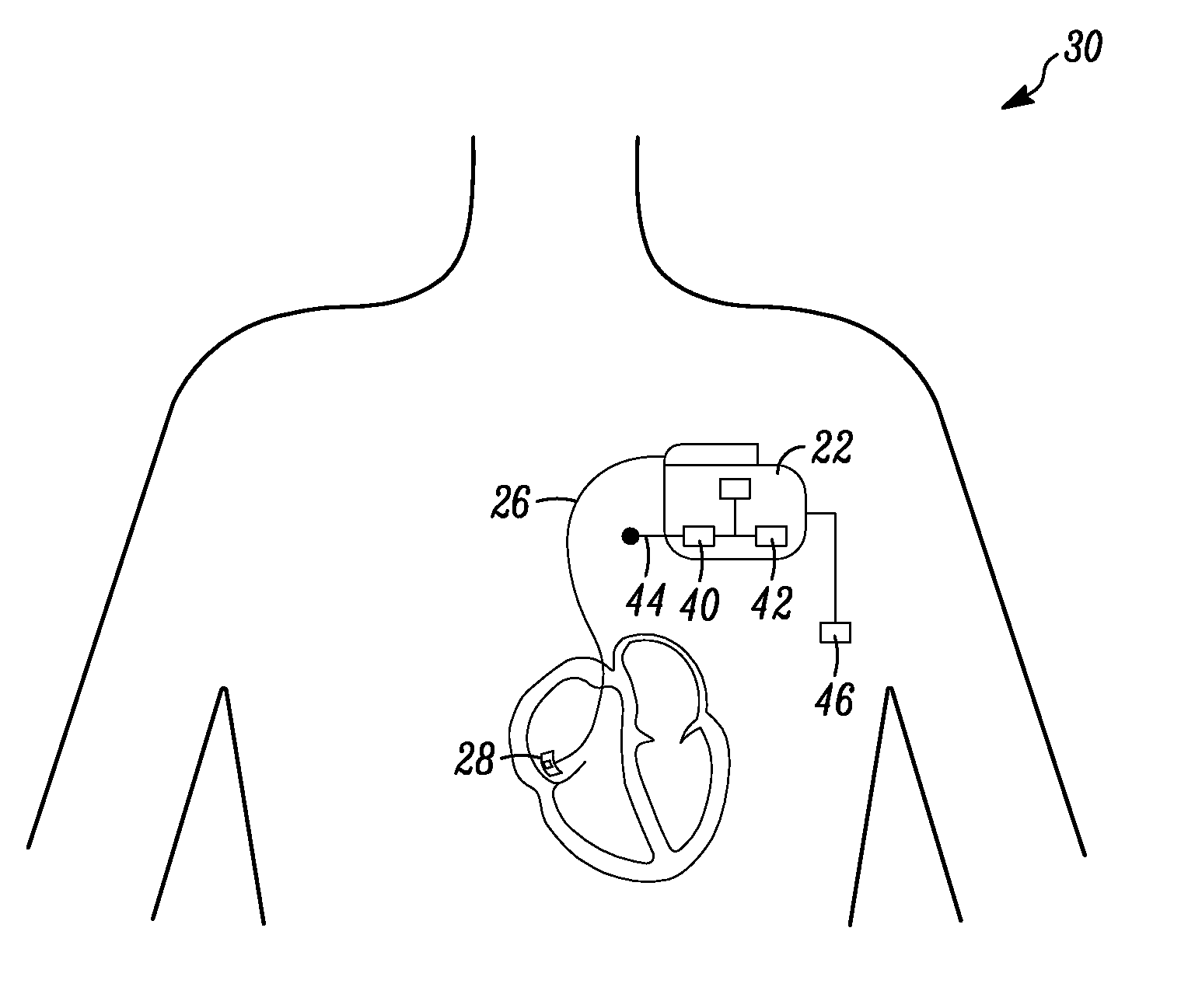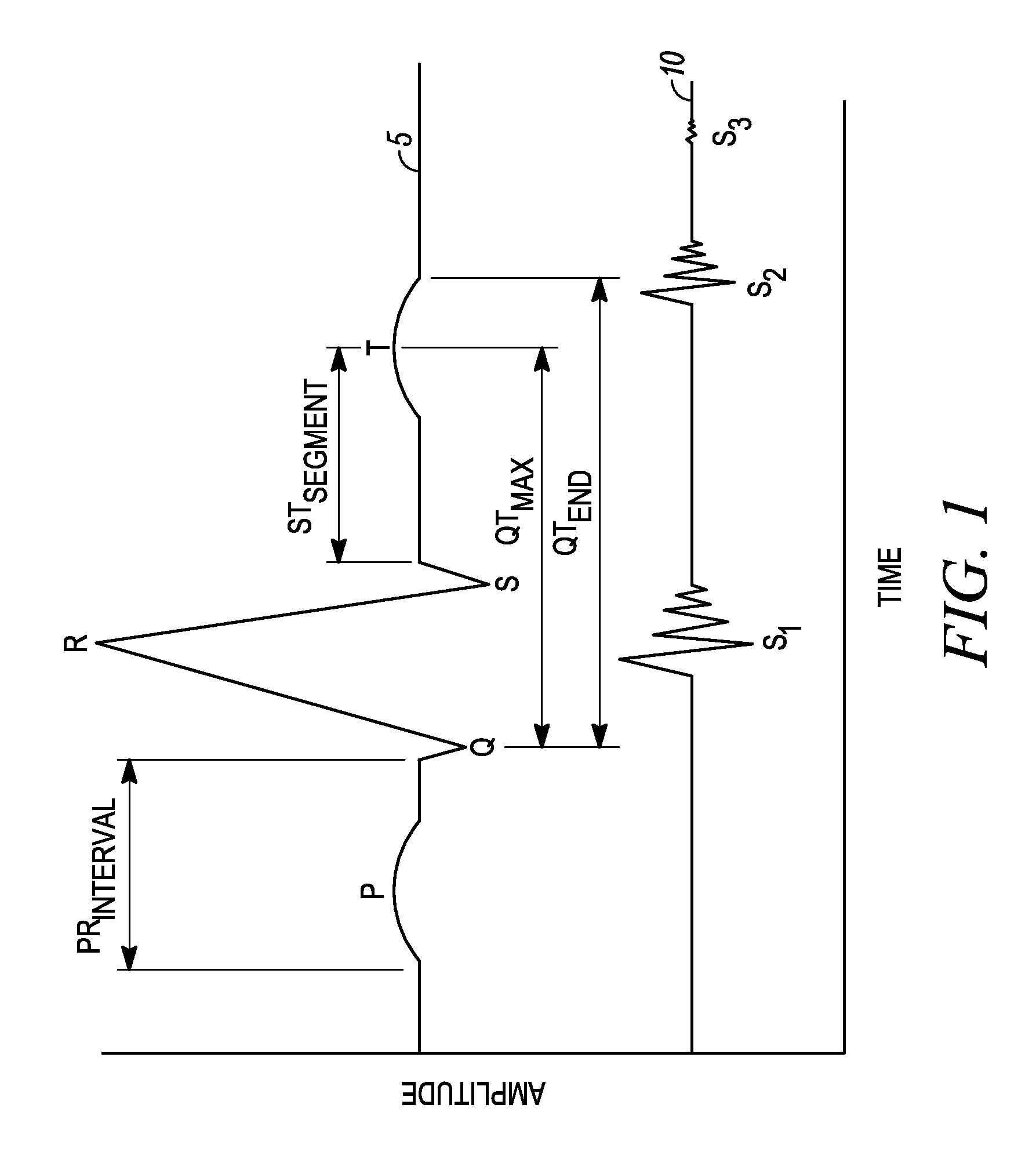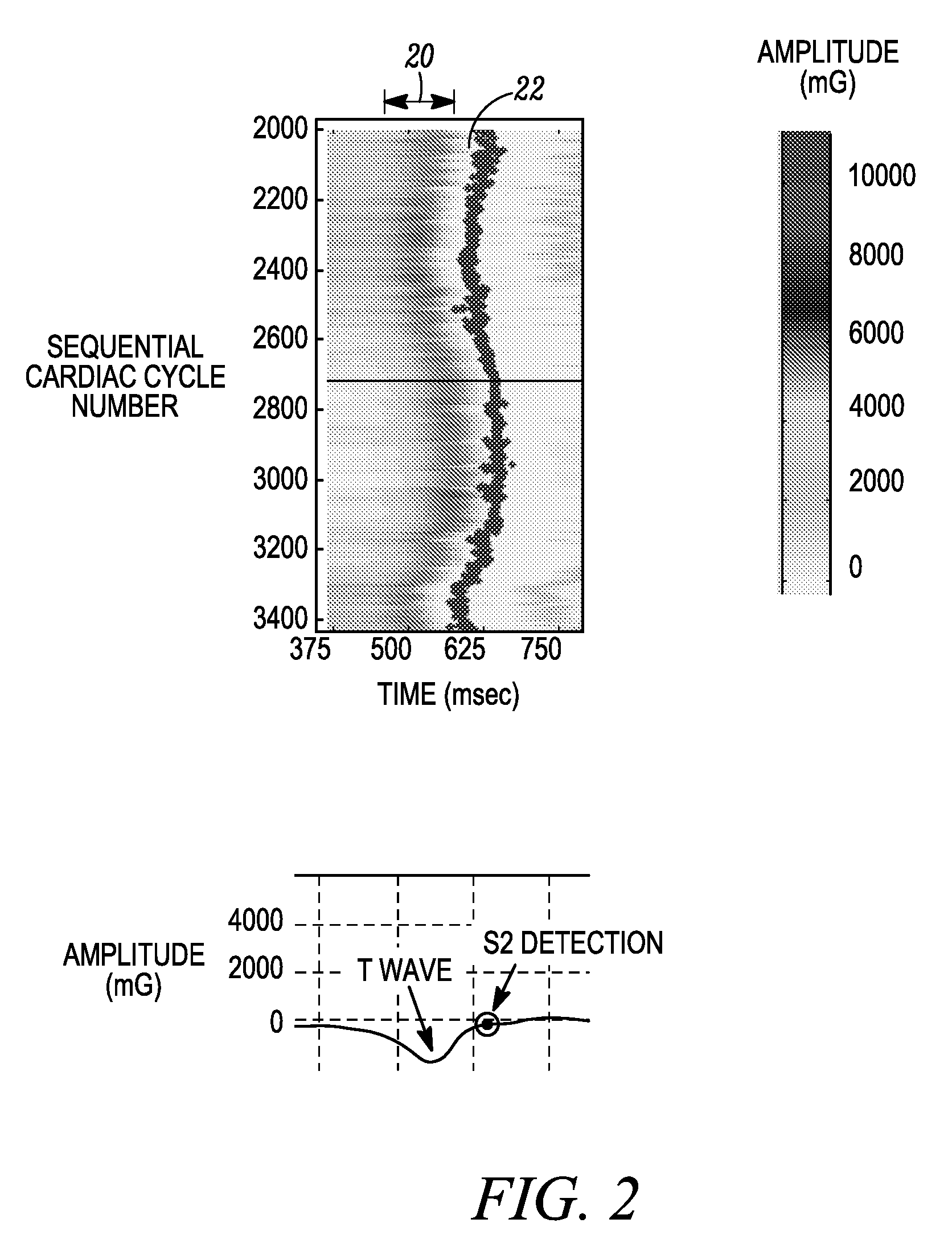Glycemic control monitoring using implantable medical device
a medical device and implantable technology, applied in the field of glycemic control in diabetic patients, can solve the problems of reducing affecting the function of the brain,
- Summary
- Abstract
- Description
- Claims
- Application Information
AI Technical Summary
Problems solved by technology
Method used
Image
Examples
Embodiment Construction
[0021]As discussed above, a significant number of patients with diabetes also have an implantable medical device for treating a medical condition. Implantable medical devices (IMDs) are devices designed to be implanted into a patient. Some examples of these devices include cardiac rhythm management (CRM) devices such as implantable pacemakers, implantable cardioverter defibrillators (ICDs), cardiac resynchronization therapy (CRT) devices, and devices that include a combination of such capabilities. The devices are typically used to treat patients using electrical therapy and to aid a physician or caregiver in patient diagnosis through internal monitoring of a patient's condition. The devices may include electrodes in communication with sense amplifiers to monitor cardiac electrical activity within a patient, and often include sensors to monitor other internal patient parameters. Other examples of implantable medical devices include implantable diagnostic devices, implantable insulin...
PUM
 Login to View More
Login to View More Abstract
Description
Claims
Application Information
 Login to View More
Login to View More - R&D
- Intellectual Property
- Life Sciences
- Materials
- Tech Scout
- Unparalleled Data Quality
- Higher Quality Content
- 60% Fewer Hallucinations
Browse by: Latest US Patents, China's latest patents, Technical Efficacy Thesaurus, Application Domain, Technology Topic, Popular Technical Reports.
© 2025 PatSnap. All rights reserved.Legal|Privacy policy|Modern Slavery Act Transparency Statement|Sitemap|About US| Contact US: help@patsnap.com



